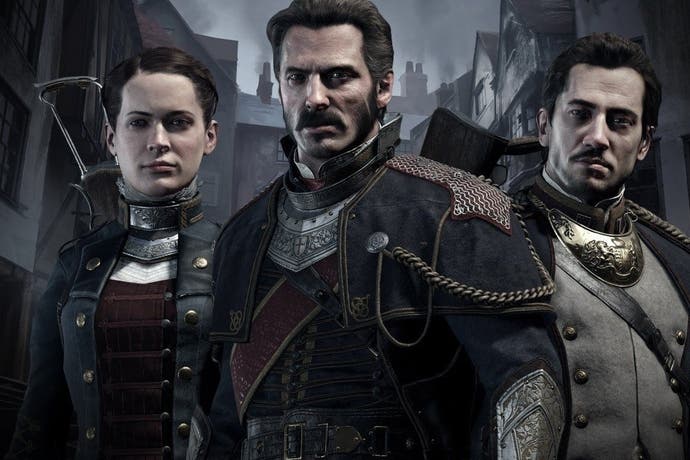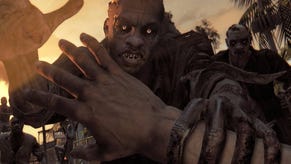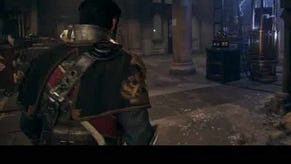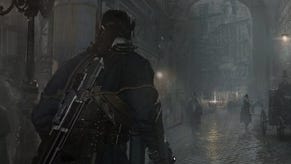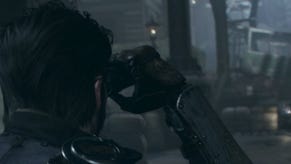Performance Analysis: The Order: 1886
Interactive entertainment?
The Order: 1886 may well prove to be a highly divisive title - but for all its controversies, we're equally confident that it represents something very special, a sneak-peek at the future direction of real-time graphics on console hardware. Ready at Dawn's visual technology is simply immense: so good, so precise, so realistic that at times it's like you're playing a game that looks as good as a pre-rendered movie. This is a milestone in the development of next-gen visuals.
Implementing the very latest rendering technologies and integrating them with a superb level of consistency throughout the rendering pipeline, this is clearly a stunning visual showcase. Every element of the scene, from environmental materials to clothing, hair and skin is exceptionally rendered, beautifully lit according to how light interacts with their physical properties. There's little - if anything - in the way of hard geometric edges to give this game an old-school gaming aesthetic, while the more traditional high detail texture work found in most games gives way to a softer, more filmic look.
Effects work is lavish, rendered at a high quality, but without any single effect standing out over the others. There's a pleasing consistency in the quality of the rendering we've not seen here since Crytek's Ryse - camera and per-object motion blur along with a high quality depth of field effect blend perfectly into a rendering pipeline where every element has its place, enhancing the cinematic nature of the scene. Jaggies are mostly non-existent owing to the excellent anti-aliasing, but we're unsure bout the technique utilised here. Ready at Dawn's graphics presentations to the industry mention the use of 4x MSAA, but there's the odd manifestation of shimmer on edges and very rare sub-pixel break-up, hinting that a post-process AA technique may be in play.
Performance is the icing on the cake, and an area where we had some concerns. Initial game footage we saw revealed some clear frame-rate issues - and even the 2014 Gamescom demo exhibited noticeable performance hiccups, despite the letterboxed 1920x800 rendering resolution (which is retained for the final game). The final game is a world apart: Ready at Dawn aims for a locked 30fps and for the vast majority of the experience it doesn't deviate from the target, with most of the dropped frames occurring on cuts, making them totally unnoticeable. There are very rare performance dips during the most intense of combat scenes, but these are mild judged by the standard of the majority of 30fps titles.
However, regardless of its undeniable visual triumphs, The Order: 1886 faces justified criticism about the length of the experience and what motivations remain for gamers to keep on playing once the story reaches its conclusion. In our performance analysis pieces, we aim to get you the facts and figures as soon as possible, but it's clear that there's an appetite for a completely different bunch of metrics. Just how long does this game last, and is its brevity offset by the quality of the gameplay in the way that Ready of Dawn suggests?
Of course, a relatively brief single-player 'campaign' is hardly novel in the world of gaming - much was made of Platinum Games' single-player title Vanquish being a four-hour game - an assessment that proved inaccurate but more importantly irrelevant. The joy was in the playing, in the experience - even once 'complete', you were left with the sense that your time with the game was far from over.
However, it's fair to say that Ready at Dawn has different objectives in mind. The Order: 1886 is a profoundly linear, dare we say it "cinematic" experience, where the developer revels in its immense technology, bombarding you with beautiful visuals, often to the detriment of the gameplay. To illustrate, the first hour of gameplay sees almost 50 per cent of the duration dedicated to cut-scenes, with exploration and combat equally divided at around 15 minutes a pop. For those that like to play games, not watch them - regardless of the visual magnificence - The Order: 1886 can be initially very offputting, but it puts the priorities of the developer into perspective.
However, the balance of the gameplay vs cut-scenes shifts as you progress further, with a much more action-orientated second half, but the raw stats of our complete playthrough are revealing. The game lasted a total of six hours, 35 minutes - including cut-scenes that devour around a third of that time. Combat (including stealth sections) accounted for around 40 per cent of our overall experience, with exploration taking up the remainder. We've got a complete time-lapse of our entire experience right here - with a spoiler warning attached, obviously, for those able to process visual information at 40x speed! The time-lapse is useful in that it does give a pretty good idea of the flow of the game, in particular the balance between gameplay and less interactive elements.
In discussing The Order: 1886 amongst the team (John Linneman is working on a deeper look at the tech we'll run this weekend), one game dominated the conversation - Crytek's Ryse. Rightly lambasted for its disappointing gameplay, from a visual perspective there's clearly much in common between the Xbox One launch game and Ready at Dawn's PS4 debut.
Both share a similar aesthetic, built on a combination of superb art direction and an advanced, consistent, state-of-the-art rendering pipeline. Equally clear is that the emphasis on the visual component of the experience has an undesirable impact on the quality of the overall package. Ryse suffers from one-note gameplay mechanics, while The Order: 1886 tantalises with moments of brilliance but is over all too quickly, with a profoundly disappointing conclusion.
Fundamentally, it all comes back to the point we made in our 2014 gaming round-up - graphics are evolving at a breakneck pace, but gameplay remains rooted very much in the last generation. And perhaps what disappoints the most with The Order: 1886 is that this imbalance is actively tipping in the wrong direction - where the emphasis on the graphical glory actively seems to come at the expense of the quality of the gameplay.
